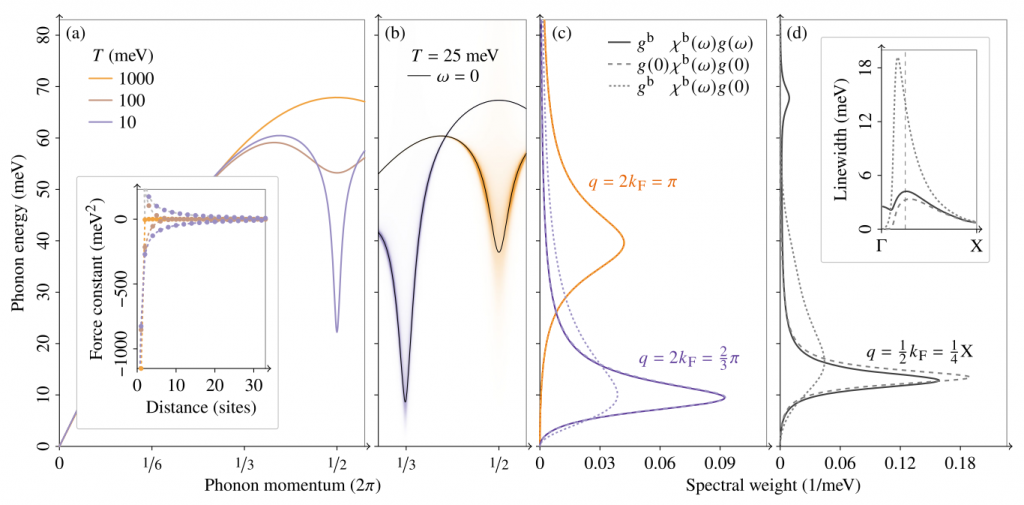This website uses cookies to ensure a better user experience.
To get more information, please read our Cookie Statement.
Phonon Self-Energy Corrections: To Screen, or Not to Screen
In a paper published in the Physical Review X, our colleague Nina Girotto contributed to the international collaborative research to quantify the comparison of controversial approaches to calculating the self-energy of phonons by downfolding the problem to effective low-energy systems. This work settles a heated debate about which formulation is more appropriate in a first-principles context.
Phonon Self-Energy Corrections: To Screen, or Not to Screen
Jan Berges, Nina Girotto, Tim Wehling, Nicola Marzari, and Samuel Poncé, Phys. Rev. X 13, 041009 (2023).
DOI: 10.1103/PhysRevX.13.041009
Phonons are collective atomic vibrations in crystals that govern many physical phenomena ranging from electrical and thermal transport to superconductivity and light absorption. When calculating them, it is important to consider that the interactions between two particles in a crystal are not bare but screened by the other particles. The effect of the screening on the atomic vibrations is encoded in the so-called phonon self-energy. However, computing the exact self-energy presents a formidable challenge requiring approximations to describe realistic materials accurately. The most common approximation has been repeatedly criticized for double counting screening effects. This work provides the essential benchmarks to settle the longstanding debate. Through calculations for realistic materials and models, it is shown that the common approximation can describe changes in the phonon self-energy more accurately than alternatives retaining the mathematical structure of the exact self-energy. The authors overcome the problem by separating a low- and a high-energy part to bridge the gap between the bare and the screened interactions. This approach opens up the thrilling possibility of tackling the dynamics of the electron-phonon coupling and phonons in materials where the concept of independent particles breaks down.

Figure 1. Results for the generalized (a)–(c) one-dimensional Peierls and (d) three-dimensional Fröhlich models. (a) Adiabatically screened phonon dispersion in random phase approximation (RPA) with Kohn anomaly for different electronic temperatures T at half filling. The inset depicts the corresponding interatomic force constants. (b) Phonon spectral function in RPA together with adiabatic phonon dispersion at half filling (orange) and one-third filling (mauve). (c) Cross section through the spectral function at the Kohn anomaly by using RPA (solid lines) and a comparison with a result obtained by a combination of two screened vertices (dashed lines) and bare-screened vertices (dotted lines). (d) Corresponding figure for the Fröhlich model. The inset depicts the linewidth as a function of q. The approach using two screened vertices remains close to the RPA result.




